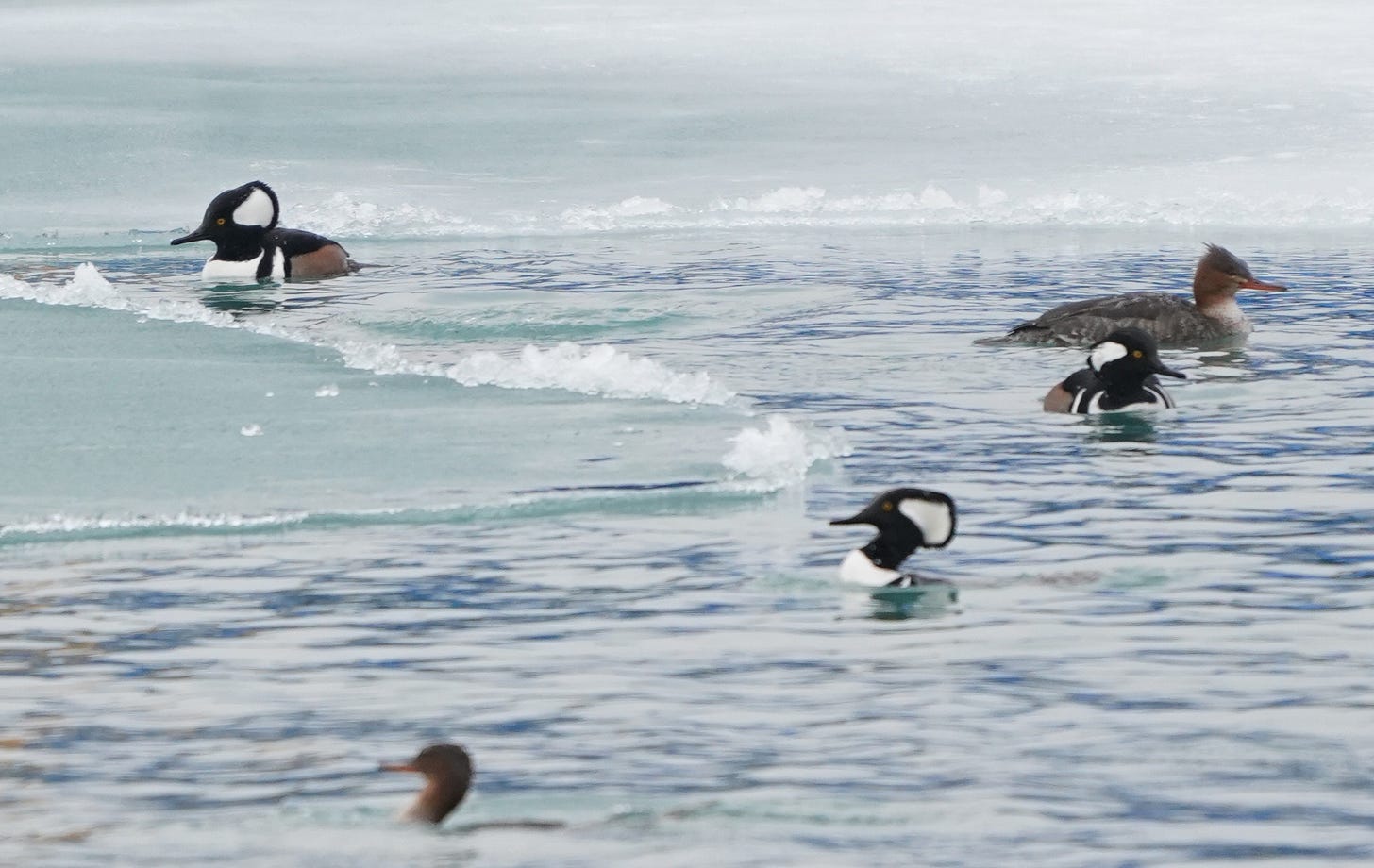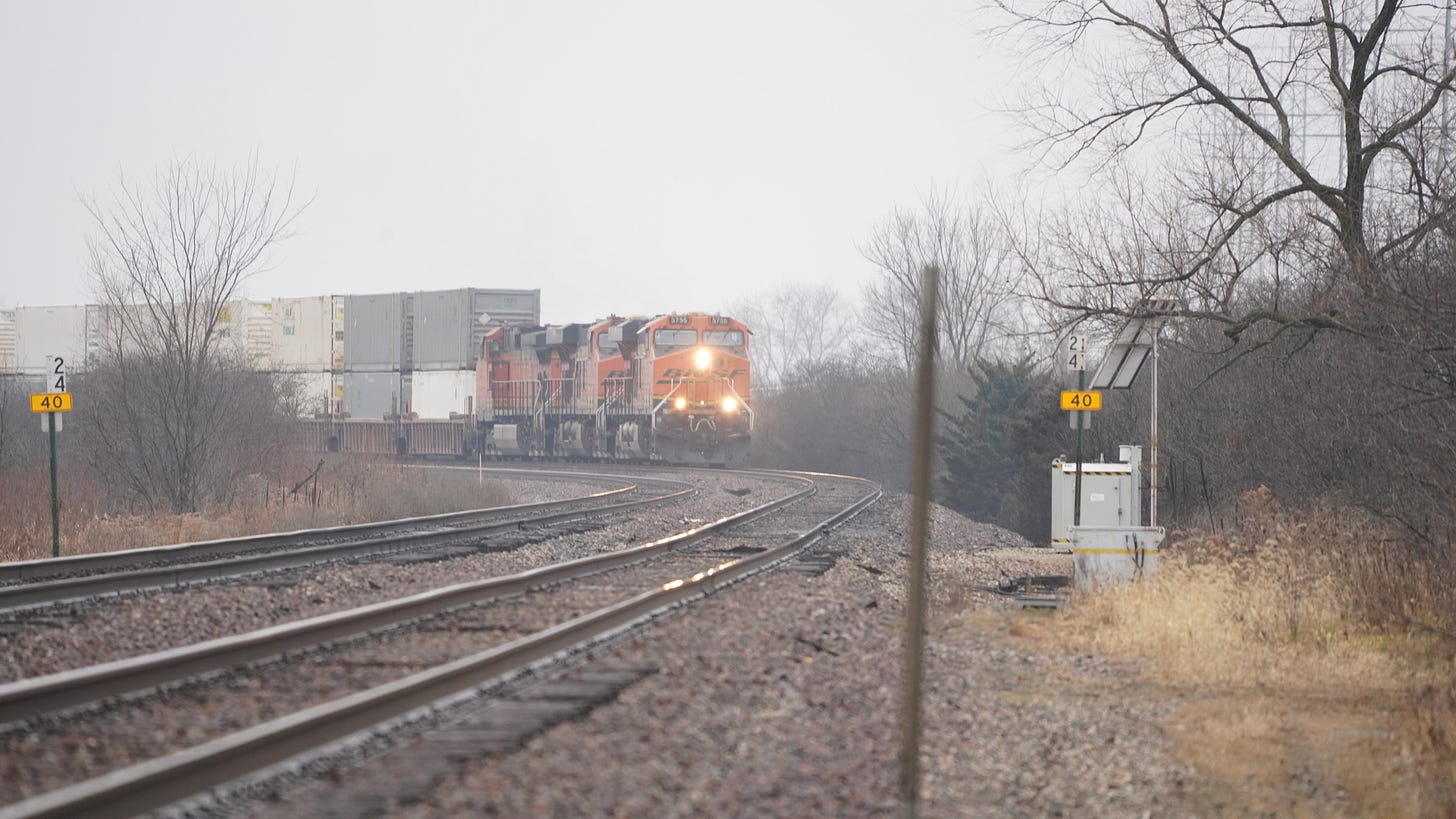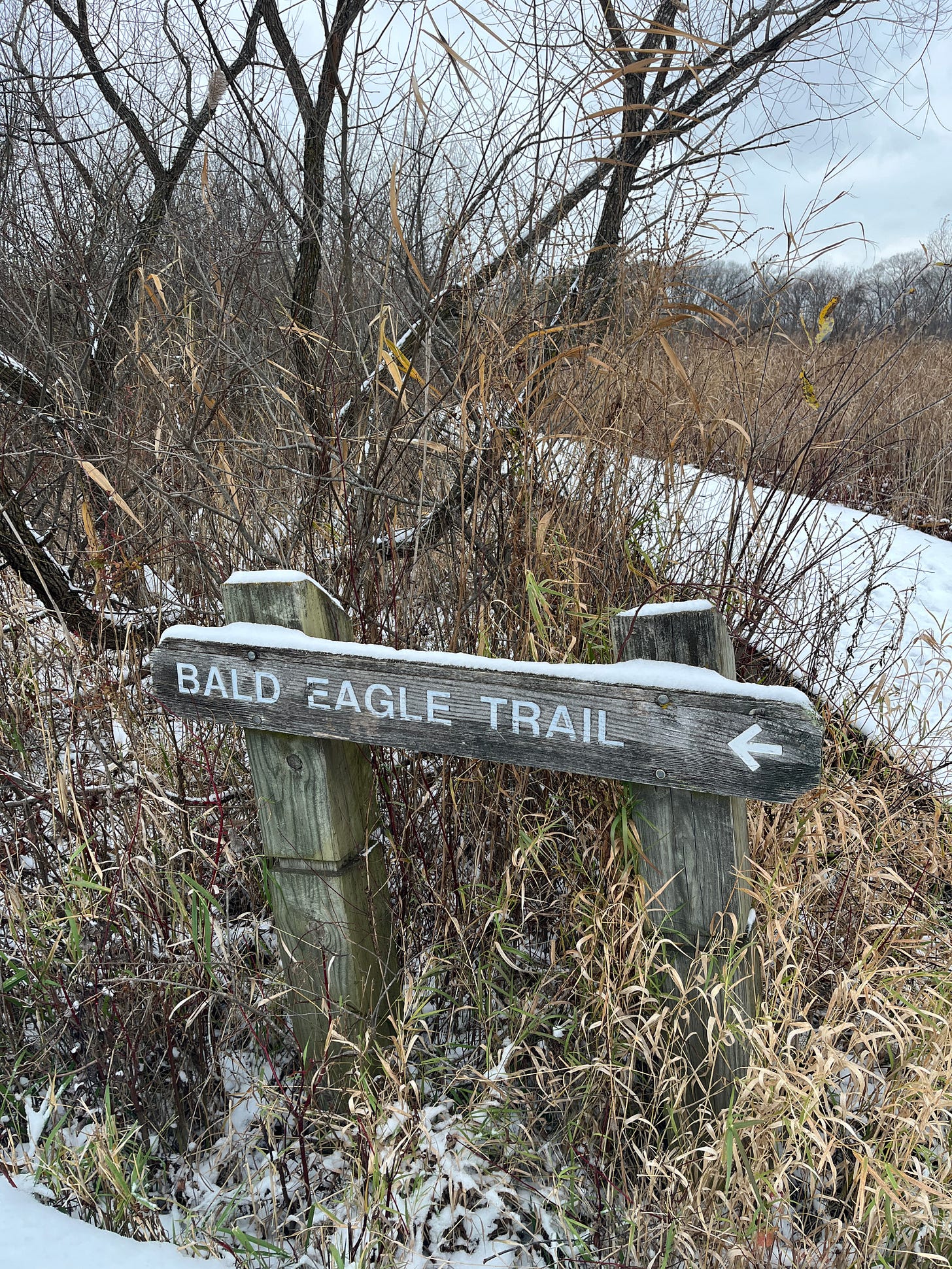A winter waterfowl preview
The weather can tell us a few things to expect.
One thing the Midwest has a lot of in winter is waterfowl. Ducks, geese and swans are generally plentiful—if you know where to look.
Around here, it’s the inland lakes and ponds, as long as they’re unfrozen. The “big lake,” Lake Michigan is always a tantalizing option. Birds linger in its harbors and bays until April or even May.
The weather had been mild all fall, but that changed during the past few weeks. The larger flights of winter waterfowl are under way now, as waters to the north are freezing. There’s less space in the waterways for foraging in places like Wisconsin. The waterbirds don’t come down unless they have to—think birds like Common Goldeneyes and Common Mergansers.
The puddle ducks, aka dabbling ducks, include pintail, shovelers and teal. They can be found on shallower ponds as long as they don’t freeze over. Diving ducks include goldeneye, merganser, scaup and scoter. They’re generally found on lakes and big rivers.
Another factor at this time of year is hunting season. One may want to stay away from the Des Plaines River Wide Waters, a Southwest Suburban site. The same with Wolf Lake along the Illinois-Indiana border—these aren’t places to be without blaze orange and some misplaced bravado. Waterfowl hunting season generally ends by January, though.
The Chicago lakefront and places like Gillson Park in Wilmette, Waukegan Harbor and North Point Marina in Winthrop Harbor are reliable places for diving ducks. One underrated locale is the North Shore Channel, which tends to stay unfrozen. When inland waterways freeze, those sites become prime locales for birds and birders. Rivers with dams that keep water open become key locations inland.
Counting crows (and owls and ducks)
With December here, it’s time to turn attention to one of the grand traditions of birding, one of the majors, the Christmas Bird Count.
From a post in 2020:
On Sunday, I’ll be up at 3 a.m. to make the drive out to my assigned area as part of Chicago Ornithological Society’s Lisle-Arboretum Christmas Bird Count (CBC). Then I’ll walk around a locked gate to get into my corner of “Area 4,” at a gem of a spot in the Southwest Suburbs. I may or may not be allowed in the preserve at that hour, but I will take my chances if it means seeing or hearing Great Horned Owls, Eastern Screech Owls or possibly a Barred Owl.
A day looking for birds is a day well spent. That’s what possesses us to rise early and walk the wintry fields and woods of Chicagoland on a random day in December. It means rising before dawn to look and listen for owls and a 12-hour marathon to see as many birds as we can in our portion of the count circle.
The count is part scavenger hunt, part social event and a great excuse to spend a day outside. The 121-year-old tradition is simple and democratic—most anyone can participate and it is almost entirely run by volunteers. The state is carved up into approximately 85 count circles, diameters of 15 miles each, and there are around 2,000 nationally. The count circles typically are divided into smaller portions like Area 4 so as to make the scale manageable.
I took a look at my waterfowl data for the last 10 Christmas Bird Counts, just to confirm my theories about ice cover. There’s a set of small quarry ponds in our count area. They’re nothing to special to look at, in an industrial corridor with towering power lines, a BNSF railway, and tailings left over from years of quarrying. But those ponds are a good gauge for waterfowl numbers. In the years when it was relatively warm, there were decent numbers of Mallard, Gadwall, and Black Duck. Occasionally there’d be a shoveler, wigeon, or even a pintail. But naturally when it’s iced over, there’s a steep drop-off; the only Mallards we recorded were flyovers, likely headed to the nearby Des Plaines River (which tends not to freeze until much later).
Parting shot
Opting to be outside on Friday led me to the snowy and blustery Bald Eagle Trail, of course. And yes, we did see a Bald Eagle (and Sandhill Cranes, Mute Swans, and more).
If you liked this post, you also may like:
This newsletter has been completely free since April 2024! I’d like to keep it that way into the future. Any paid subscribers can certainly help with that goal. If you’ve been enjoying this newsletter, I hope you might become a paid subscriber also. Click here to get started or click the button above.










I’m really looking forward to CBC this year. It remains to be seen what kind of ice cover there will be by then
I went followed a couple of links back and found the post about Wisdom, the Laysan albatross. Does anyone know if he is still living? I hope your bird count went well.